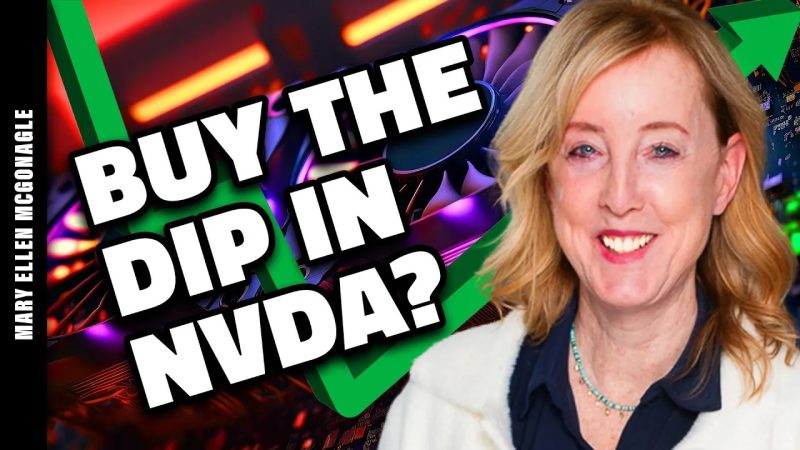Nvidia (NVDA) stock has been a hot topic in the investment world recently, especially after the recent dip in its price. Many investors are wondering whether now is a good time to buy the dip in NVDA or if there are risks to consider before jumping in. In this article, we will explore the factors to consider when deciding whether to buy the dip in NVDA.
Market Performance History
When considering buying the dip in NVDA, it’s essential to look at the company’s market performance history. Nvidia is known for its chip-making business and has been a pioneer in the graphics processing unit (GPU) industry. Over the past decade, NVDA stock has shown significant growth, outperforming the broader market.
Despite its impressive performance, NVDA stock is not immune to market fluctuations. The recent dip in NVDA’s stock price can be attributed to various factors, including market volatility, industry trends, and macroeconomic conditions. Analyzing the historical performance of NVDA stock can provide insights into how the company has weathered downturns in the past and how it may perform in the future.
Fundamental Analysis
Fundamental analysis is crucial when evaluating whether to buy the dip in NVDA. This analysis involves looking at the company’s financial health, earnings potential, growth prospects, and market position. Nvidia has a strong fundamental foundation, with a history of consistent revenue growth and profitability.
One significant factor to consider is Nvidia’s exposure to the semiconductor industry, which is known for cyclical downturns. As a key player in the industry, NVDA’s stock price is sensitive to market conditions and competition. Investors should assess Nvidia’s competitive position, product portfolio, and partnerships to determine its long-term growth potential.
Valuation Metrics
Valuation metrics are essential in determining whether a stock is undervalued or overvalued. When considering buying the dip in NVDA, investors should look at key valuation metrics such as price-to-earnings (P/E) ratio, price-to-sales (P/S) ratio, and dividend yield. These metrics can provide insights into whether NVDA stock is trading at a discount or premium relative to its intrinsic value.
It’s important to compare NVDA’s valuation metrics to those of its industry peers and the broader market to gauge its attractiveness as an investment. A low valuation relative to peers may indicate a buying opportunity, while a high valuation could signal overvaluation.
Risk Factors
Before buying the dip in NVDA, investors should also consider the risk factors associated with the stock. Market risks, industry trends, regulatory changes, and company-specific risks can impact NVDA’s stock price. For example, fluctuations in demand for GPUs, competition from rivals, and geopolitical tensions can pose risks to Nvidia’s business.
Investors should conduct a risk assessment and consider their risk tolerance before making an investment decision. Diversification, thorough research, and a long-term perspective can help mitigate risks when buying the dip in NVDA.
Conclusion
In conclusion, the decision to buy the dip in NVDA requires careful consideration of market performance history, fundamental analysis, valuation metrics, and risk factors. While Nvidia has shown strength in the semiconductor industry, investors should conduct thorough research and due diligence before investing in NVDA. By weighing the pros and cons, investors can make an informed decision on whether to buy the dip in NVDA.

